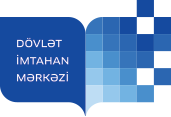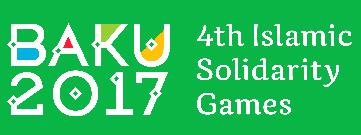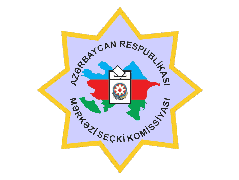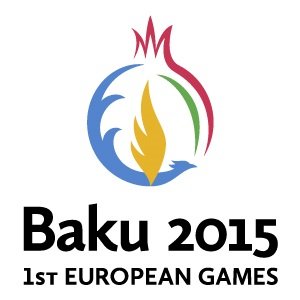NEWS
-
26.02.2020
The killing of around 700 civilians in an Azerbaijani town of Khojaly – over night during the onslaught of Armenian troops in 1992 – marks the bloodiest page in the Nagorno-Karabakh war. The event, which is referred to as Khojaly massacre or Khojaly genocide, was a turning point in the Nagorno-Karabakh conflict. It changed the course of the war as Armenians gained a psychological advantage over Azerbaijanis. As Armenian forces were advancing, Azerbaijani civilians were fleeing to other parts of Azerbaijan fearing a second Khojaly. This pattern continued throughout the war and by the time the sides signed the cease-fire agreement in 1994, Armenian forces occupied Nagorno-Karabakh and surrounding seven districts which together amounted to over 17 percent of Azerbaijan’s internationally-recognized territories. Some 47,000 Azeris were expelled from Nagorno-Karabakh and around 600,000 were forced to leave the surrounding territories. It is worth mentioning that expulsion of civilians is a common element in many cases of genocides.
By October 1993, all of the Nagorno-Karabakh, as well as Lachin corridor – a strategic territory connecting Nagorno-Karabakh to Armenia – were occupied by Armenian forces.
Armenians used similar technique applied by Serbia in Kosovo and Bosnia – using heavy artillery to shell villages until irregular Azerbaijani units withdrew and then occupying towns and villages, expelling civilians, looting and destroying all the buildings.
The war between Azerbaijan and Armenia took lives of 200,000 people. Today, 26 years since the signing of the cease-fire agreement, and despite the efforts of the OSCE Minsk Group (co-chaired by Russia, France and the U.S.) that has been mediating the conflict since 1994, there is no prospect of peace between the two Caucasus countries. Khojaly massacre is one of the roadblocks that overshadows negotiations process and impedes building trust between Azerbaijani and Armenian peoples. Since 1992, Azerbaijan has been pushing for Khojaly’s recognition as genocide and wants Armenia to acknowledge its violent treatment of civilians.
Khojaly massacre was planned, systematic extermination of civilians that fits Raphael Lemkin’s (1943 or 1944) definition of genocide. According to the Convention on the Prevention and Punishment of the Crime of Genocide, which was drafted by Lemkin and adopted in December 1948 by the United Nations’ General Assembly, genocide is "any of the following acts committed with intent to destroy, in whole or in part, a national, ethnic, racial or religious group, such as such":
“Killing members of the group; causing serious bodily or mental harm to members of the group; deliberately inflicting on the group conditions of life calculated to bring about its physical destruction in whole or in part; Imposing measures intended to prevent births within the group; Forcibly transferring children of the group to another group.”
The word “with intent” stands out in Article Two. Special intention is а prerequisite for an act to be qualified as genocide and distinguishes genocide from similar international crimes. Khojaly massacre was the case of killing members of an ethnic group with the intention to destroy them for military and strategic purposes. The goal was to break the spirit of the Azerbaijani people and to expel as many civilians as possible from their homes.
In 2003, former Armenian President Serzh Sargsyan admitted that the massacre served the purpose of intimidation of Azerbaijani civilians. In an interview with British journalist Thomas DeWaal, which was later published in the latter’s book Black Garden, Sargsyan suggested that the Khojaly massacre meant to break the stereotype that Armenians would not kill civilians.
“Before Khojaly, the Azerbaijanis thought that they were joking with us, they thought that the Armenians were people who could not raise their hand against the civilian population. We were able to break that [stereotype]. And that’s what happened.” (De Wall, 2003, p. 172)
In the same interview Sargsyan also suggested that if civilians had fled, they would not have been killed.
Monte Melkonian, a California-born Armenian who was recruited in the Nagorno-Karabakh war and was in charge of 4,000 soldiers during the war, described Khojaly massacre as a “strategic goal” in his diaries that were published posthumously in his brother Marker Melkonian’s book “My Brother's Road: An American's Fateful Journey to Armenia”. (Melkonian, 2005, p. 213)
Monte Melkonyan also blamed out of control forces for the atrocities.
“Monte crunched over the grass where women and girls lay scattered like broken dolls. ‘No discipline’, he muttered.” (Melkonian, 2005, p. 213)
Monte Melkonyan was one of many members of ASALA (Armenian Secret Army for the Liberation of our Homeland) organization who fought in the Nagorno-Karabakh war. (Melkonian, 2005) ASALA is recognized as a terrorist organization in the USA and several European countries and had mobilized its members during the Nagorno-Karabakh war.
Khojaly
Officially, 613 civilians were killed in Khojaly. Among the victims were 63 children, 106 women and 70 elderly. Some 1,275 residents were taken hostage and whereabouts of 150 other residents remain unknown. Fifty-six people were killed with special cruelty. Before the massacre, Khojaly had a population of 7,000 residents.
The town did not have a military fortification but was strategically important. It controlled Khankendi airport – the only airport in the Nagorno-Karabakh - and was neighbouring strategic Azerbaijani towns of Lachin (a corridor between Armenia and Karabakh), Kalbacar, Khojavand and Shusha.
Ahead of the attack, Armenians had surrounded the town from three sides and left the fourth funnel open for residents to flee. However, the fleeing civilians were ambushed and killed before reaching an Azerbaijani outpost. According to the account of survivors, they were given an ultimatum by the Armenians – get out or die. (Goltz, 1999).
Journalists who were given temporary access to Khojaly by Armenians captured the scene of the carnage in video footage that was later aired in the national TV. The footages show corpses of civilians, including those of children as small as two scattered in a plateau; some corpses were scalped, beheaded, or had their eyes gouged, pregnant women were bayoneted in the abdomen. Some children were found with severed ears. An Azerbaijani journalist Chingiz Mustafayev who was in the scene of the massacre suggested that judging by the position of the bodies, the victims had not resisted or attempted to escape.
Land claim and racial hatred
There are two key factors that were precursor to Khojaly massacre – territorial claims and racial hatred. Armenians claim that they have lived in the region for thousands of years and must conquer back what they describe as their ancient homeland. For this reason, a large number of Armenians do not see a problem expelling and exterminating Azerbaijani civilians. It is worth mentioning that contrary to Armenain claims, the number of Armenians had been increasing in Karabakh due to the Russian Empire’s conquest of the region in 1813.
Khojaly massacre was a logical conclusion of the series of dehumanization campaigns and propaganda – carried out by the Armenian government and its public figures. This campaign started decades before the war in 1990s. Thus, it would be interesting to look at in the context of the Khojaly massacre against the backdrop of Gregor H. Stanton’s ten stages of genocide – classification, symbolization, discrimination, dehumanization, organization, polarization, preparation, persecution, extermination and denial.
The first stage of genocide – classification - that was suggested by Stanton, fits well in the context of Khojaly massacre. Since the early XX century, Armenians have classified Azerbaijanis as the others – the Turks whom they perceived as enemy and hated. The underlying tension and hatred for Turkic Azerbaijanis reached its peak in 1918 when Armenian Dashank terrorist groups, an extension of nationalist party Dashnaksutyun (Armenian Revolutionary Federation) massacred 12,000 Azerbaijanis in Baku between 30 March and 2 April. Dashnaks killed civilians indiscriminately in a campaign that would later be called the genocide of Azerbaijanis. The massacre became a turning point in Azerbaijan’s political direction in the following years to come. (Hasanli, 2016)
The hatred for Turks was expressed even during the Soviet times where expression of nationalism and ethnic animosity were a taboo. Zori Balayan, an Armenian writer and journalist, who later became the chief ideologist of Karabakh movement, called Turks – and by extension the Azerbaijanis – Armenia’s and Russia’s “enemy” in his book Ochag (The hearth) in 1984, even though it was before Gorbachov’s perestroika. (De Waal, 2003) In the same book, Zori Balayan openly voiced Armenian claims on Azerbaijan’s and Turkey’s territories.
It should be noted that Armenia’s land claims on Azerbaijan and Turkey are the main part of its national ideology. In 2011, asked by an Armenian student whether Armenia would be able to conquer Mountain Ararat in Eastern Turkey, President Serzh Sargsyan said: "This is the mission of your generation. For example, my generation skillfully accomplished its mission. We liberated Artsakh [Nagorno-Karabakh], part of our land, from the enemy in the early 1990s. Each generation has its own mission."
Since the end of the war in 1994, Azerbaijan has been trying to achieve Khojaly’s recognition as genocide and so far ten countries and a number of U.S. states have recognized Khojaly as genocide. The massacre embodies Azerbaijani people’s helplessness during the war and their military defeat.
Khojaly massacre was an intentional and cold-blooded crime against humanity that was used as an instrument of psychological manipulation over unarmed civilians. Regardless of the casualty number, the intention of killing was present. Moreover, there is no reason to believe that the Azerbaijani civilians in other occupied regions would no be massacred had they not chosen to flee their homes with Armenian advances.
Khojaly was the crime against humanity committed for nationalistic ambitions of a society that believes it has the right to expel and kill Azerbaijanis. Khojaly was an indiscriminate and intentional killing of civilians for their ethnic belonging.
Perpetrators of Khojaly genocide should be brought to justice in order to prevent future crimes against humanity.
-
During the Karabakh war, Armenian military committed an act of genocide against the population of Azerbaijan’s Khojaly town consisting of 7,000 people on Feb. 26, 1992.
As many as 613 people, including 63 children, 106 women and 70 old people were killed as a result of the massacre. A total of 1,000 civilians became disabled in the onslaught. Eight families were completely annihilated, 130 children lost one parent, while 25 lost both parents. Some 1,275 innocent residents were taken hostage, while the fate of 150 people still remains unknown.
All these acts were committed by Armenian military with extreme mercilessness and inconceivable barbarism. The second battalion of 366th regiment under the command of Major Seyran Ohanian, the third battalion under the command of Yevgeniy Nabokhin, staff chief of the first battalion Valeriy Chitchyan and more than 50 officers and ensigns took part in the attack, according to "The Investigation Materials Concerning Khojaly Occupation".
The town residents who attempted to flee, were killed by Armenians in pre-organized ambushes. According to the Russian Remedial Center Memorial, 200 corpses were brought from Khojaly to Aghdam within four days of the massacre. Facts of humiliation on dozens of bodies were registered. Forensic examination in Aghdam was performed on 181 corpses, including 13 children. The examination revealed that 151 people died from bullet wounds, 20 people died from shrapnel wounds, 10 were killed with blunt instruments. Facts of scalping people alive were also revealed.
The Khojaly genocide has become one of the most terrible and tragic pages of Azerbaijani history.
Azerbaijani people have faced ethnic cleansing and genocide by Armenian nationalists and chauvinists for 200 years. Azerbaijanis were deported from their historical lands and became refugees and internally displaced persons, and all this was accompanied by massacres committed by Armenians.
The Nagorno-Karabakh events, which began in 1988 along with continuous efforts to implement the Armenian desire of building “an Armenia from sea to sea”, led to destruction of towns and villages, murder of thousands of innocent people, as well as the exile of hundreds of thousands of Azerbaijanis from their historical lands.
Armenia's government is trying to annex Nagorno-Karabakh despite international legal norms, demonstrating its readiness to resort to any kind of crime and atrocity. The Khojaly genocide – a tragedy of the 20th century – was a result of this aggressive and criminal policy. This tragedy of the late 20th century was one of the most serious crimes not only against the people of Azerbaijan, but humanity as a whole.
Armenians scalped people alive, beheaded them and cut other parts of their bodies, gouged children’s eyes and disemboweled pregnant women. It should also be noted that chemical weapons were used in Khojaly during the attack.
All these prove that Armenia committed genocide against civilians, violating Geneva Convention's protocols.
The Khojaly genocide, committed with a particular atrocity, terrified journalists and publicists from Russia, Georgia, the UK, France, Germany, the US and other countries.
International conventions and laws in all countries condemn genocides like the Khojaly tragedy, and call them inadmissible.
The world must know that this crime was directed not only against the Azerbaijani people, but also against the whole civilized world.
This crime shouldn’t go unpunished. Armenia's military-political aggression must be condemned by the world community. International organizations and parliaments of world countries must give political and legal assessment to the Khojaly genocide committed by Armenia in Azerbaijan’s territories.
The parliaments of several countries have made decisions recognizing the Khojaly genocide.
-
26.02.2020
France 2 TV Channel’s “Islam” program has broadcast the second part of “Azerbaijan - at the crossroads of civilizations” documentary produced with the support of the Heydar Aliyev Foundation and Azerbaijan’s Embassy in France.
The film highlights the 19th century oil boom in Azerbaijan, the Azerbaijan Democratic Republic, the first parliament's declaration of Azerbaijan’s independence, the extension of suffrage to women and the establishment of a first-ever school for girls in Muslim Orient.
The documentary features the events of 1990, the struggle of the Azerbaijani people for independence in Baku, as well as the killing of civilians by Soviet tanks.
It also highlights the Armenia-Azerbaijan Nagorno-Karabakh conflict, telling that the independence of Azerbaijan was not easily achieved.
The film also hails the increasing role of women in all areas of life in Azerbaijan, stressing their outstanding contribution to the country’s social and political development. It also provides an insight into Azerbaijan’s multiculturalism traditions, saying that the representatives of various religions have lived here in peace and harmony for centuries and are free to celebrate their religious rituals.
-
25.02.2020
Word-famous cellist Jamal Aliyev will perform at Biggar Music Society on February 28. The musician will be accompanied by pianist James Colman.
The concert will feature works by Ludwig van Beethoven, Johannes Brahms, Pyotr Tchaikovsky, David Popper and others.
Founded in 1960, Biggar Music Society offers a season of concerts of classical and contemporary music in Scotland.
For a short time, Jamal Aliyev has stunned listeners around the world with his incredible talent and virtuosity.
The musician has successfully performed at music festivals in Turkey, Great Britain, France, Switzerland, China and other countries.
In 2017, he gave solo debut performances at the BBC Proms, Royal Albert Hall with the BBC Concert Orchestra and Keith Lockhart, and at the Royal Festival Hall with the Philharmonia Orchestra under the baton of Sir Karl Jenkins. He has been a regular performer on BBC Radio 3 since first appearing on “In Tune” and, in 2015, was one of the first BBC Introducing Classical Artists to be selected.
Becoming a musician was genetically pre-ordained for Jamal - both his parents are involved in music. Future cellist began his musical studies with his first teacher and beloved grandfather, Honored Artist of Azerbaijan Gara Aliyev, who played a large role in developing Jamal’s musical skills. He trained dozens of supremely gifted musicians, laureates of various international competitions.
Jamal Aliyev displayed musical talent at a young age, already playing concerts at the age of 5. He won the prize at Trakya International competition at the age of 9 as well as Antonio Janigro International Cello Competition when he was only 11 years old.
Young cellist was invited to study at Moscow Conservatory Central Music School and Yehudi Menuhin School in London. When Jamal turned 14, he decided to choose London.
Afterwards Jamal Aliyev and Welsh musician Karl Jenkins began to perform much time together. Jenkins even composed a music piece for him. Jamal presented the work of the famous composer at Royal Albert Hall. It was his second performance at one of the world's most famous stages.
-
25.02.2020
The third World Harmony International Competition of Young Performers has come to an end with a spectacular closing ceremony.
The large-scale project brought together young talents from Azerbaijan, Belarus, Georgia, Kazakhstan, Uzbekistan, Russia and Ukraine.
Founded in 2017, the contest aims to discover young talents and promote classical music and folklore.
Speaking at the event, the project founder, president of the organization of the Union of Georgian Folklore and Classical Music "Harmony" Tsitsino Bichikashvili congratulated all participants and winners of the competition.
Speaking at the opening ceremony, the project founder, President of Union of Georgian Folklore and Classical Music "Harmony" Tsitsino Bichikashvili stressed that the contest aims to expand its geography.
At the event, congratulation words were read out on behalf of the director of the State Philharmonic Hall, People’s Artist of Azerbaijan Murad Adiozalov.
In his letter, Murad Adiozalov congratulated all contest participants and wished them further success.
Next, young talents were awarded with honorary diplomas.
Asim Rzazade (clarinet), Elmira Hasanova (vocal), Jamala Abdinzade and Nargiz Aliyeva (piano duo) were among the winners.
The competition was held for the second time in Vilnius, Lithuania in 2018. Next February, the 4th World Harmony competition will be held once again in Vilnius.
The contest was co-organized by the Georgian Union of Folklore and Classical Music "Harmony" and "Gənclərə dəstək" (Youth Support) project with the support of the Culture Ministry as well as Baku Music Academy and the National Conservatory.
-
Famous surrealist artist Mehriban Efendi will represent the country at the10th anniversary of “Surrealism Now” art project.
The artist has been invited by the project director Santiago Ribeiro, who achieved worldwide recognition as a great surrealist artist.
The anniversary exhibition will take place in Portugal from April 24 to June 26, bringing 125 artists from more than 50 countries.
Since 2010, Mehriban Effendi has been participating in this art project. Effendi's works have been successfully exhibited in Portugal, Bulgaria, Slovakia, Germany, France, Italy and Macedonia and other countries.
In 2014, the artist was handed Sandro Botticelli Award “For Art and Talent Her paintings "Mystery" and "Impression of The Night" were included in the book "Polychromia 2016 " highlighting the best contemporary artists.
Efendi's works are exhibited in Portugal, USA, Holland, Bulgaria, France and other countries.
She also worked as a costume designer with the German filmmaker Veit Helmer in his comedy “Absurdistan,” shot in Azerbaijan in 2008.
-
Indonesian The Jakarta Post newspaper has published an article by Veeramalla Anjaiah highlighting the beauty of Baku.
Headlined “Beautiful Baku: A city of love and legends”, the author shares his impressions about Azerbaijan’s rapid development in recent years, and the stunning beauty of the capital city of Baku.
The article reads: “Do you want to see both Europe and Asia in one place? Do you want to experience the different climates of the world in one country? Do you want to visit a land-locked country that has 650 kilometers of coasts and a thriving port?
Then go to Azerbaijan, an amazing oil-rich country in the South Caucasus.
With an area of 86,600 square kilometers, Azerbaijan is located at the crossroads of Europe and Asia. It is a place where cultures of the East and the West mingle.
Azerbaijan, which is also known as the Land of Fire due to its natural gas flames and ancient practice of fire worship, has nine out of the world’s 11 climates.
Technically, Azerbaijan is a land-locked country located on the coast of the Caspian Sea, the world’s biggest lake. It has a long coast, impressive navy and its biggest port is in its capital city, Baku.
Recently, the Azerbaijani government invited me, Anggia Ermarini, a member of the House of Representatives from the National Awakening Party (PKB), and senior journalist Muhammad Anthony to Baku to observe the Feb. 9 parliamentary elections. Prior to the elections, I had a chance to see the increasing beauty of Baku, one of the fastest-growing tourism destinations in the world.
Baku, or Baki as locals call it, is the world’s lowest-lying capital at 30 meters below sea level. The city has many wonders, mysteries, legends, love tales, historical monuments, modern mansions, beautiful parks, boulevards and alleys.
Thanks to the oil boom in the 19th century, many merchants, both Azerbaijani and foreign, built beautiful mansions along the coast of the Caspian Sea. At that time, Azerbaijan was producing more than half of the world’s oil.
“The buildings of rich oil merchants in Baku tell numerous love tales and legends,” Baku tourist guide and researcher Fuad Akhundov told The Jakarta Post in Baku.
Old and new
The landmark of Baku, where a quarter of Azerbaijan’s 10 million people live, is the Maiden Tower, a 12th-century 30-m stone watchtower in the Old City of Baku. The tower has many legends and myths related to Zoroastrianism and Islamic culture. Its name is based on a popular legend about a young maiden who engaged a man threatening Baku in a fierce battle to protect her people from enslavement. Her enemy was impressed with her act of bravery and he eventually fell in love with her, hence the name “Maiden Tower”.
Another interesting place is the Icheri Sheher (Walled City), which has the famous Shirvanshah Palace, mosques and other structures.
“It is a cultural treasure. We have to preserve it for our future generations,” Abdul Rauf, an Azerbaijani student, told the Post in Icheri Sheher.
The Walled City, including the Shirvanshah Palace and Maiden Tower, was listed as a World Heritage Site by the United Nations Educational, Scientific and Cultural Organization (UNESCO) in 2000.
There is a “burning” mountain called Yanardagh on the outskirts of Baku. Throughout the year, flames erupt from the mountainside.
Thanks to another oil boom in the 21st century, Baku has become a paradise for global designers who have built amazing ultramodern and futuristic buildings. These new buildings have made Baku more beautiful than ever.
America’s top global design firm HOK built the three stunning Flame Towers, which display dazzled lighting and colourful images. One can see the entirety of Baku from the top of these towers.
Other interesting places in Baku include the Heydar Aliyev Center, the Azerbaijan Carpet Museum, the Ateshgah fire temple, the Government House, Little Venice, the Bibi-Heybat Mosque and Nizami Street along with numerous parks and fountains.
Azerbaijan has mouthwatering cuisine. Tourists should try popular Azerbaijani dishes like pilaf rice, bread, meat kebabs, grilled fish and sweets like baklava. Azerbaijanis, more than 90 percent are Muslims, like to eat raw and fresh vegetables like tomatoes and cucumbers during meals.
The beauty of Baku cannot be explained in words. You have to see it personally. Before you go, you should see the 1999 James Bond movie The World is Not Enough, which was shot in Baku.
Baku rose to fame by hosting several events like the Eurovision Contest in 2012, the European Games in 2015, the Formula One Grand Prix since 2016, the Islamic Solidarity Games in 2017 and the Non-Aligned Movement Summit in 2019.
This year, Baku will host several UEFA EURO 2020 soccer matches.
Azerbaijan, which attracted 3.17 million foreign tourists in 2019, is well known for its carpets and caviar.
Baku has several attractive shopping malls and affordable hotels.
The city is also known for its chilly and harsh winds. Take warm clothes with you if you go there.
From Jakarta, Baku can be reached on Turkish Airlines, Qatar Airways and Emirates”.
-
25.02.2020
Azerbaijan National Carpet Museum is pleased to announce a new educational program for its little guests.
Young art lovers (10-18 years) are invited to take part in theoretical and practical lessons on the history of Azerbaijan's traditional costumes every Saturday from March to June.
At the end of the 3-month training program, the museum will host a fashion show by young designers. All participants who successfully complete the educational program will receive certificates.
Founded in 1967, Azerbaijan National Carpet Museum displays some of the best examples of the carpet weaving art.
The museum, initiated by Latif Karimov, an outstanding scientist and carpet weaver is beautiful inside and out. The new building of the Carpet Museum, designed in the form of a rolled carpet, opened in the Baku Seaside Park in 2014 and all carpets were transferred to this museum.
Today the museum hosts many events, such as exhibitions, international symposiums, and conferences.
The main purpose of the museum is to store, research, and demonstrate unique examples of the carpet weaving art, which are Azerbaijan’s national heritage.
In 2004, the law on the Preservation and Development of Azerbaijan Carpet was enacted with the museum’s participation. The law aims to implement the registration of Azerbaijani carpets, protect and support their development, and coordinate scientific and methodical training.
The Azerbaijan Carpet Museum is not only an exhibition ground, but also a forum for scientific debates.
In 2018, two major international events took place here. One of them was the conference "Decorative Art and Interior" of two international committees of the International Council of Museums (ICOM). Another is the 3rd International Symposium of Common Languages of Turkic World. The program of the three-day symposium included a conference, thematic exhibitions, master classes, fashion shows and fairs. The event gathered more than 80 participants from 22 countries.
Last year, the exhibition titled "Azerbaijan Heritage in Louvre Museum" opened its doors at the Azerbaijan Carpet Museum.
For the first time in the country's cultural history, three rare exhibits from the world-known Louvre Museum’s permanent exhibition were presented in Baku.
The project contributed to the State Program for the Preservation and Development of Carpet Art in Azerbaijan for 2018–2022.
The Museum continues to actively cooperate with foreign experts in various fields.
-
24.02.2020
Leila Khazari Gallery invites you to enjoy unique art pieces inspired by one of the most mysterious and at the same time simple symbols in human history.
The exhibition presents a fish art theme for the most demanding esthete. Everyone can find their "goldfish" here on March 12.
A monumental stone fish, cubic painting decorated with traditional ornaments, grotesque steam punk sculpture, Absheron fishermen and magical white fishes in their nets, still-lifes and other art works will definitely grab your attention.
The first was a fish, at least as many traditional beliefs and mythology claim. As the 12th sign of the Zodiac Pisces marks the end of one cycle and the beginning of the next.
Ancient Indian myths say that the god Vishnu during the Great Flood turned to fish and saved the ancestor of the people of Manu. In ancient China, fish was considered as a symbol of happiness and abundance.
In the tales of a goldfish fulfilling any desire, the most cherished dream of ancient fishermen was reflected in catching a fish in their nets that would fulfill any, even the most extravagant desire. Fish is a symbol that everything is possible and helps the owner to "swim" to his goals.
The exhibition is organized Leyla Khazari, the author of the project Parviz Huseynov, curator Rustam Huseynov, poster design Mir Azer Abdullayev. The culinary sponsor of the event is the Solokha restaurant.
The exhibition runs until April 10, 2020. Entrance on the opening day only by invitation, the rest of the days is free.
-
Azerbaijan's tourism products were presented to 25 Belarussian travel companies at the “Travel Connections Minsk” event in Minsk. During the meetings in B2B format, the tourism potential of Azerbaijan, including newly tourism routes, was widely promoted. The meetings focused on the direct flights between Minsk and Baku and the introduction of a visa-free regime between the two countries.



.png?v=DqKtbngFu8-eBM77oNP77E2SV2gNF4_tUk0Y9IcK12s)

















